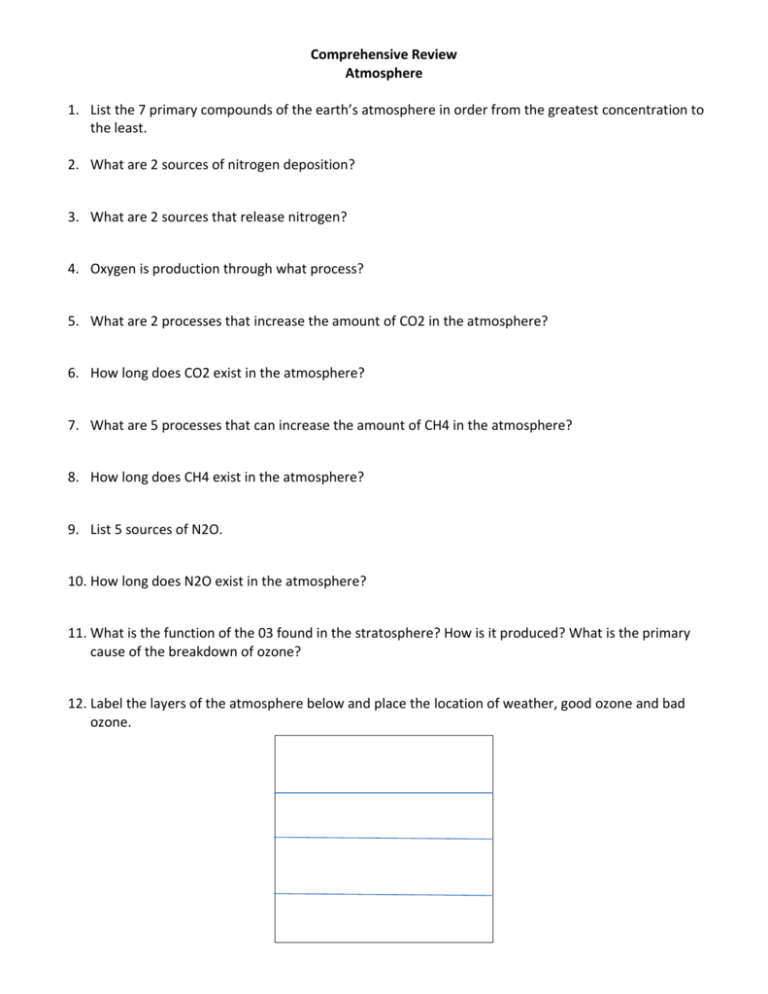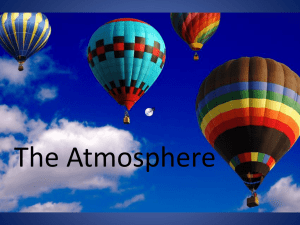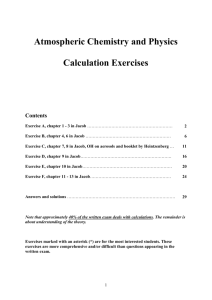File
advertisement

Comprehensive Review Atmosphere 1. List the 7 primary compounds of the earth’s atmosphere in order from the greatest concentration to the least. 2. What are 2 sources of nitrogen deposition? 3. What are 2 sources that release nitrogen? 4. Oxygen is production through what process? 5. What are 2 processes that increase the amount of CO2 in the atmosphere? 6. How long does CO2 exist in the atmosphere? 7. What are 5 processes that can increase the amount of CH4 in the atmosphere? 8. How long does CH4 exist in the atmosphere? 9. List 5 sources of N2O. 10. How long does N2O exist in the atmosphere? 11. What is the function of the 03 found in the stratosphere? How is it produced? What is the primary cause of the breakdown of ozone? 12. Label the layers of the atmosphere below and place the location of weather, good ozone and bad ozone. 13. What are 5 properties influence by weather? 14. Define climate. 15. Define convection. 16. Explain the formation of wind. 17. What is the weather associated with low atmospheric pressure? 18. Define albedo. 19. Which type of surface has the highest albedo? 20. Which area on the globe receives the most sunlight? 21. In terms of the carbon cycle, what process results in cooling? Warming? 22. Explain cloud formation. 23. Define warm front. 24. Define cold front. 25. What are the 3 most important greenhouse gases? 26. Where does Earth receive more solar radiation in terms of land distribution? 27. Define dew point. 28. Explain the types of weather on each side of a mountain range. 29. Give 1 natural example of greenhouse gas emission, and 1 anthropogenic example of greenhouse gas emission. 30. What are the 5 causes of global air circulation? 31. Define coriolis force? 32. Explain the movement of air in each hemisphere. 33. What are 2 things that affect the amount of deflection? 34. Label below the Coriolis Effect: 35. List 6 examples of how humans have affected climatic patterns. 36. Where do the winds reverse during el nino? 37. What happens to the trade winds during el nino 38. What happens to the water during el nino? MULTIPLE CHOICE REVIEW: 1. The zone of atmosphere in which weather occurs is known as the a. Ionosphere b. mesosphere c. troposphere d. thermosphere e. stratosphere 2. On the leeward side of a mountain range, one would expect a. More clouds and rain than on the windward side b. More clouds but less rain than on the windward side c. Colder temperatures d. Less clouds and less rain than on the windward side e. No significant difference 3. The surface with the lowest albedo is a. Snow b. ocean water c. forest d. desert e. black topsoil 4. Areas of low pressure are typically characterized by ____ air and move toward regions where the pressure is ___ with time. a. Sinking; falling b. rising; falling c. sinking; rising d. rising; rising e. sinking; sinking 5. The ozone layer exists primarily in what section of the atmosphere? a. Troposphere b. stratosphere c. mesosphere d. thermosphere e. ionosphere 6. The gas that is responsible for trapping most of the heat in the lower atmosphere is a. Water vapor b. ozone c. carbon dioxide d. oxygen e. nitrogen 7. 99% of the volume of gases in the lower atmosphere, listed in descending order of volume are a. O2, N2, CO2, H2O b. H2O, N2, O2, CO2 c. O2, CO2, N2, H2O d. O2, H2O, N2, CO2 e. N2, O2, H2O, CO2 8. A low pressure air mass is generally associated with a. Hot, humid weather b. Fair weather c. Tornadoes d. Cloudy or stormy weather e. hurricanes










